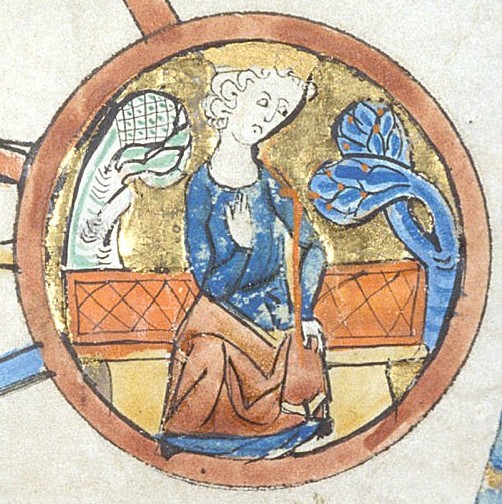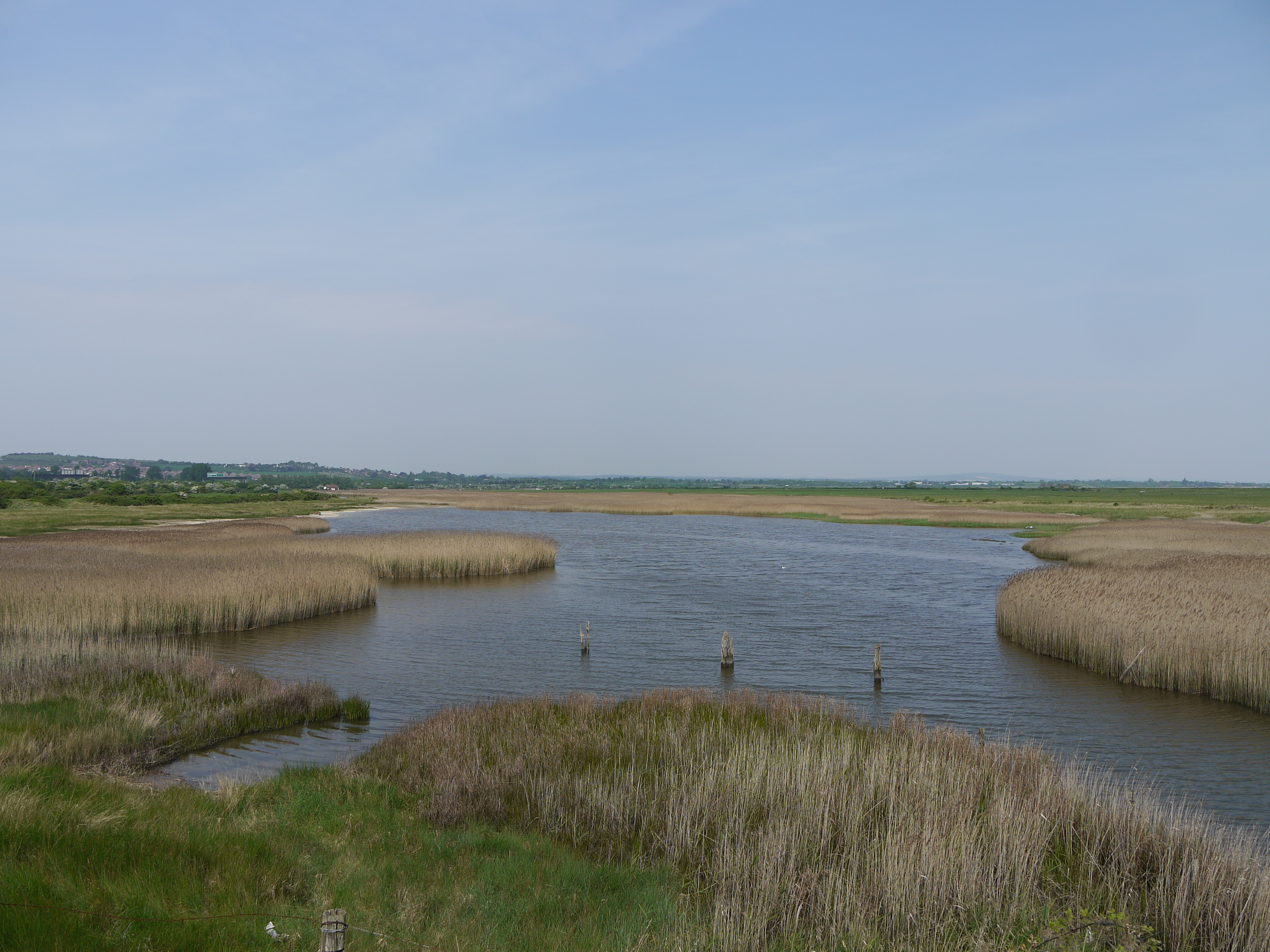|
Southwick Priory
Southwick Priory or Our Lady at Southwick () was a priory of Augustinian canons founded in Portchester Castle on Portsmouth Harbour and later transferred north to Southwick, Hampshire, England. It ceased at the Dissolution of the Monasteries in 1538. Foundation In 1133 Henry I of England, Henry I founded a priory of Austin canons in the church of St. Mary, Portchester, within the walls of Portchester Castle. The foundation charter gave to the canons the church of Portchester, timber for fencing, building and fuel, common pasture in the wood of Hingsdon; the large manor of Preston Candover, Candover; and a hide (unit), hide of land in 'each of' Southwick, Hampshire, Southwick and Applestead. By the early part of the thirteenth century, the priory is referred to in charters (held at Lambeth Palace) as ''Southwick Priory'' and it is believed to have moved to the site in Southwick c. 1145–1153. 13th to 16th centuries Towards the end of the Middle Ages, the priory became a r ... [...More Info...] [...Related Items...] OR: [Wikipedia] [Google] [Baidu] |
Henry I Of England
Henry I ( – 1 December 1135), also known as Henry Beauclerc, was King of England from 1100 to his death in 1135. He was the fourth son of William the Conqueror and was educated in Latin and the liberal arts. On William's death in 1087, Henry's elder brothers Robert Curthose and William Rufus inherited Duchy of Normandy, Normandy and England, respectively; Henry was left landless. He purchased the County of Cotentin in western Normandy from Robert, but his brothers deposed him in 1091. He gradually rebuilt his power base in the Cotentin and allied himself with William Rufus against Robert. Present in England with his brother William when William died in a hunting accident, Henry seized the English throne, promising at his coronation to correct many of William's less popular policies. He married Matilda of Scotland and they had two surviving children, Empress Matilda and William Adelin; he also had many illegitimate children by his numerous mistresses. Robert, who invaded from ... [...More Info...] [...Related Items...] OR: [Wikipedia] [Google] [Baidu] |
Pilgrimage
A pilgrimage is a travel, journey to a holy place, which can lead to a personal transformation, after which the pilgrim returns to their daily life. A pilgrim (from the Latin ''peregrinus'') is a traveler (literally one who has come from afar) who is on a journey to a holy place. Typically, this is a physical journey (often on foot) to some place of special significance to the adherent of a particular religious belief system. Background Pilgrimages frequently involve a journey or search of morality, moral or spirituality, spiritual significance. Typically, it is a journey to a shrine or other location of importance to a person's beliefs and faith, although sometimes it can be a metaphorical journey into someone's own beliefs. Many religions attach spiritual importance to particular places: the place of birth or death of founders or saints, or to the place of their "calling" or spiritual awakening, or of their connection (visual or verbal) with the divine, to locations where ... [...More Info...] [...Related Items...] OR: [Wikipedia] [Google] [Baidu] |
Stubbington
Stubbington is a village which is located between Southampton and Portsmouth, in the county of Hampshire on the south coast of England. It is within the borough of Fareham. History Both Stubbington and neighbouring Crofton were mentioned in the Domesday Book (the 11th-century UK census) as small districts belonging to the estates of Titchfield Abbey. The earliest known cricket match to have been played in Hampshire took place in the village in 1733. During the 19th century, Stubbington engulfed Crofton and the small fishing village of Hill Head. The Crofton name still remains in the name of many local facilities, such as the Crofton School and Crofton Old Church. At the start of the 20th century, the village still consisted of just a few dozen cottages and farms. By 1939, the population had risen to around 2,500, and a number of small shops had opened surrounding the village green. This remains the focus of the village to the present day, with a war memorial situated o ... [...More Info...] [...Related Items...] OR: [Wikipedia] [Google] [Baidu] |
Colmer
William Meyers Colmer (February 11, 1890 – September 9, 1980) was an American politician from Mississippi. Colmer was born in Moss Point, Mississippi, and attended Millsaps College. He served in the military during World War I. Colmer was elected Jackson County attorney in 1921, becoming district attorney in 1928. In 1932, Colmer was elected to the House of Representatives as a Democrat from Mississippi's 6th District, located on the Gulf Coast. He was reelected 19 times. His district was renumbered the 5th after the 1960 Census, when Mississippi's declining proportion of the US population due to the Great Migration cost it a congressional seat. Originally elected as a supporter of President Franklin D. Roosevelt's New Deal, Colmer became increasingly conservative as the years passed. He became disenchanted as the national Democratic Party began to support the Civil Rights Movement and chose to back the Dixiecrats in 1948. After the ''Brown v. Board of Education'' (1954) ... [...More Info...] [...Related Items...] OR: [Wikipedia] [Google] [Baidu] |
Dorchester, Dorset
Dorchester ( ) is the county town of Dorset, England. It is situated between Poole and Bridport on the A35 trunk route. A historic market town, Dorchester is on the banks of the River Frome, Dorset, River Frome to the south of the Dorset Downs and north of the South Dorset Ridgeway that separates the area from Weymouth, Dorset, Weymouth, to the south. The civil parish includes the experimental community of Poundbury and the suburb of Fordington, Dorset, Fordington. The area around the town was first settled in prehistoric times. The Roman Britain, Romans established a garrison there after defeating the Durotriges tribe, calling the settlement that grew up nearby Durnovaria; they built an Roman aqueduct, aqueduct to supply water and an amphitheatre on an ancient British earthwork. During the medieval period Dorchester became an important commercial and political centre. It was the site of the "Bloody Assizes" presided over by George Jeffreys, 1st Baron Jeffreys, Judge Jeffrey ... [...More Info...] [...Related Items...] OR: [Wikipedia] [Google] [Baidu] |
Denmead Molens
Denmead is a village in Hampshire near Portsmouth, England. It is part of the City of Winchester district. As of 2005, it had a population of 6,457 and an electorate of 4,987. At the 2011 census the population had increased to 6,736. As of 2021, this had decreased to 6,505. History In 1316, Denmead was owned by the Bishop of Winchester, who leased it to various tenants. It became referred to as a manor in 1449, when it was owned by William Wayte. When Wayte's grandson died, the lands were divided amongst various other members of the family and Denmead was passed down. The village is shown in the Hambledon Hundred on John Speed's map of Hampshire which was published in 1611. After some time the property became further divided as it was split between different owners because it was inherited down multiple generations. This occurred frequently until 1831 when Henry Kennett became its owner. There was no further mention of Denmead Manor until 1908, when the Ecclesiastical Commissi ... [...More Info...] [...Related Items...] OR: [Wikipedia] [Google] [Baidu] |
Farlington, Hampshire
Farlington is a primarily residential district of the city of Portsmouth in the ceremonial county of Hampshire, England. It is located in the extreme north east of the city on the mainland and is not on Portsea Island unlike most of the other areas of Portsmouth. Farlington was incorporated into the city in 1932 and now forms a continuous development with Cosham and Drayton. To the north of Farlington is the suburb of Widley and to the east is the town of Havant. To the west is the suburb of Drayton, and to the south is Langstone Harbour. History Farlington was a small rural community for the majority of its existence, being part of an ancient manor and parish that also included nearby Crookhorn and Stakes (Frendstaple), places still outside the City boundary. In 1320 the manor passed to Hugh Despenser the Elder but following the forfeiture of his lands, King Edward II granted the manor of Farlington to Alice, the late wife of Edmund Earl of Arundel. Alice only held the m ... [...More Info...] [...Related Items...] OR: [Wikipedia] [Google] [Baidu] |
Sutton Scotney
Sutton Scotney is a village in Hampshire, England, north of Winchester in the civil parish of Wonston. It lies alongside the River Dever and is now bypassed by the A34 trunk road. It is notable for having been the site of numerous Spitfire crashes in the Second World War. It has a population of more than 200, and had a watercress-based economy. Its best-known resident was J. Arthur Rank who took the name of the village as part of his title when he was ennobled. The village pub, the Coach & Horses, dates back to 1762. The pub was recently refurbished and converted the former thatched village Fire station into bed and breakfast rooms. The village is home tNaomi House & Jacksplace hospices that care for life-limited children and young people from across the Wessex region. Transport Stagecoach bus route 86 ( Whitchurch to Winchester) serves Sutton Scotney.(As of 2024 this bus no longer runs through the village and now a different route runs) There was formerly a railway stat ... [...More Info...] [...Related Items...] OR: [Wikipedia] [Google] [Baidu] |
Hannington, Hampshire
Hannington is a civil parish in the English county of Hampshire. It is situated between Basingstoke and Newbury, on the North Hampshire Downs in the North Wessex Downs Area of Outstanding Natural Beauty. In the 2001 census it had a population of 332 people, increasing to 493 at the 2011 Census. History and architecture At its centre is the village green, on the edge of which is All Saints' Church, some parts of which date from the 11th century. There are also many buildings listed as Grade II of significant local historical and architectural importance. The village's only Public House, The Vine At Hannington, has views over the Hampshire Downs and is a popular stopping point for hikers following the Wayfarer's Walk. Originally called The Wellington Arms, the pub stands on land that once belonged to the estate of the Duke of Wellington. Governance The village of Hannington is part of the civil parish of Hannington, and is part of the Kingsclere ward of Basingstoke and Dea ... [...More Info...] [...Related Items...] OR: [Wikipedia] [Google] [Baidu] |




